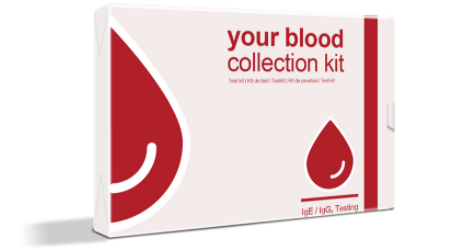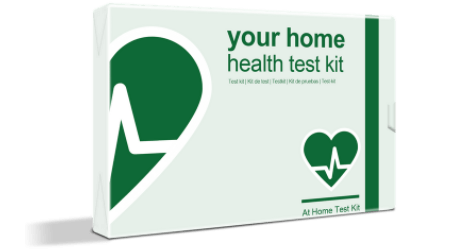Additional IgG4 and IgE Science
Why do we test for IgG4 and IgE?Testing IgG4 levels and IgE antibodies.
SOME FACTS
In the last decades conversations about the relation between abnormal nutritional reactions and health issues have gained a lot of interest. (1)
The prevalence of food reactions (IgE mediated allergy) in Europe has been estimated 3-4% in young children and adults (2), while food intolerance affects about 60% of the population. (3)
Abnormal reactions to food antigens can be classified as immune-mediated (IgE, with clinical manifestations, anaphylactic reaction) and non-IgE mediated (atopic dermatitis, enterocolitis, oesophagitis). (4-5)
IgE antibodies are involved in TypeI allergy and they mediate rapid type immune reactions, with symptoms occurring within few minutes to two hours after eating a specific food, while IgG antibodies are responsible for delayed immune reaction in food (TypeIII allergy) with symptoms occurring within few hours to few days.
Both immune-mediated and non-immune mediated reactions are involved in food intolerance development. The immune mechanism involved in food intolerance is associated with the formation of specific IgG antibodies. IgG antibodies are involved in the formation and accumulation in various organs of food protein complexes, resulting in inflammatory processes (6-7). In scientific literature is reported that 50% of patients affected by chronic diseases may possess IgG delayed mediated food allergy/intolerance (8).
BACKGROUND FOR IgG ANTIBODY TESTING
Both IgE and IgG antibodies are in closed proximity on the chromosome 14 and they are read in sequence. Their production is depending on the presence of Interleukins (ILs) in fact when IL4 is released it can be assumed that an IgE (TypeI allergy) response will occur, with an immediate food reaction (9-10). In case of sensitisation when IL10 is present, mainly production of IgG4 antibodies will be involved (9), while if other interleukins are synthesised IgG1, IgG2, IgG3 are mainly produced. The production of IgG1, IgG2, IgG3 antibodies when a specific food is consumed activates the formation of immune complexes with deposition in the body where the problem is (11). Lack of scientific studies showing evidence that the deposition of immune complexes on tissues are connected to specific symptoms make the test of IgG1, IgG2, IgG3 antibodies are not attractive from an Intolerance testing point of view. On the contrary, it was demonstrated that those antibodies are playing a role in the identification of allergic reaction of non-specific systemic reactions in which inflammatory processes play a major role (12)
WHY DO WE TEST FOR IgG4 USING BLOOD IN OUR INTOLERANCE TESTS?
We are using IgG4 antibodies because:
•When we are testing intolerances, we are not interested in the immediate allergic reaction (TypeI allergy) or inflammation related to chronic diseases (IgG1, IgG2, IgG3). IgG4 in fact is considered the blocking antibody in respect to IgE and they block access of the IgE to the allergen, helping us to understand how your immune system is reacting to food antigens before an allergic reaction (TypeI) is developed (preventive screening).
•The concentration of IgG4 is about 10,000 times higher than the IgE concentration. Therefore, IgG4 can bind faster and with greater frequency to the allergen than IgE (10) mapping your immune response to food allergens.
•IgG4 antibodies result in only 1% of the histamine released by IgE, with few patients experiencing allergic symptoms and therefore IgG4 antibodies are mostly produced when the allergy is asymptomatic.
•The primary function of IgG4 is to influence the immune-inflammatory response and having the possibility to explore how the amount of IgG4 antibodies is related to particular allergens, it will be the first step towards your journey for a healthier life.
At Healthy Stuff, we are here to help you take the first step into your journey to finding a Healthier version of yourself promoting happiness and wellbeing. Our IgG4 Intolerance tests are a tool to help you understand how your immune system is reacting to food allergens. We are not suggesting you take any food diet elimination, after this IgG4 Intolerance test without further medical advice. With this test, we are helping you draw a map of how your immune system is reacting to food allergens and take this journey together to find a better version of yourself.
References:
5) Waserman S, Watson W, Food allergy. Allergy Asthma Clin Immunol 2011; 7 (1): S7.
6) Sampson HA, Anaphylaxis: persistent enigma. Emerg Med Australas. 2006; 18: 101-2
9) Sagara, N., Fujita, S., Suzuki, R. et al. Successful sublingual immunotherapy for severe egg allergy in children: a case report. Allergy Asthma Clin Immunol 2021; 17:2-4
What is an allergy?
An allergy is a type I hypersensitivity. This means that if an individual is exposed to an allergen then it results in the production of immunoglobin E (IgE antibodies), and the release of histamine and symptoms. It is an immediate response known as an IgE-mediated immune response with symptoms occurring almost straight away. That is one of the major differences between an allergy and an intolerance: the time it takes for a reaction and the symptoms to occur. Allergic reactions can occur almost immediately whereas an intolerance reaction can sometimes present itself up to 72 hours later.
How do you spot an allergy?
Allergens themselves are usually quite easy to identify due to the quick nature of which the reaction occurs. A food diary and allergy test can help in this regard. but this does depend on the severity of reaction as well as other factors, including hydration, the time of year and sometimes even the processing of the food, especially with regard to the amount.
Allergies can be life-threatening
Many people who suffer from an allergy know that an allergic response to a food or a non-food item. This has the potential to be life-threatening in certain individuals. In the case of severe allergies, even the tiniest traces of an allergen can have an effect on the individual. This is particularly important to know in regard to peanuts, as peanuts are used in all sorts of cooking oils and ingredients, and are one of the most common allergies for people to suffer from.
Ingredients, Oils and Different Allergies
Depending on what type of item is ingested, different symptoms will present themselves differently. Symptoms of an allergy can present themselves differently, including skin rashes, hives, vomiting and swelling of the mouth, throat, and tongue (!). An individual who has multiple allergies may also have different symptoms for different items. Remember, allergies can often be hereditary, and so if someone in your family has an allergy, you should definitely learn whether or not you have an allergy.
What to do if you are experiencing these symptoms?
If you are experiencing any of the listed symptoms of an allergy, then you should immediately order a test and also consult a Doctor. It is incredibly important that you know what to do, as an allergic reaction has the potential to be life-threatening. If diagnosed with a food allergy, you must do your best to consistently avoid these items. In particular, if you have severe allergies or asthma, then education and learning can help you to avoid a life-threatening situation.

Allergy & Intolerance Tests
Our most accurate home-to-lab allergy and intolerance test from a small finger-prick blood testing kit delivered to your door.

Sensitivity Tests
Send us a small hair sample and within 7 working days, you'll have your comprehensive report identifying trigger items.

HEALTH
TESTS
Simple tests for understanding your body quickly with these concise tests. Knowledge is power with these easy to use tests.


